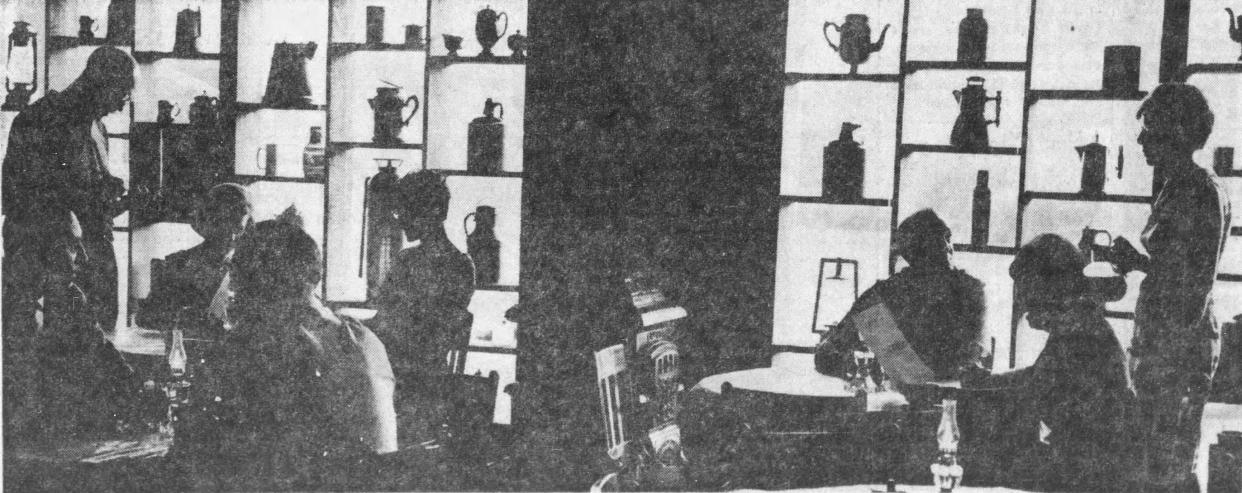How Firehouse Coffee House served the Lord's word in the '60s: Looking back

In the late 1960s, the countercultural movement was on the rise. The children of the Greatest G3eneration were bucking the system and following their dreams in directions not dictated by their forebears. Many took Timothy Leary’s advice to “Tune in, turn on, and drop out.” “Tune in” and act harmoniously with the world around them, “turn on” and become sensitive to many levels of consciousness, and “drop out” or become self-reliant and aware of choices and change. It was a hippy mantra which could be interpreted by squares as leave school, take drugs, and go to San Francisco.
As a reaction, Christian coffee shops began to pop up around the country; first in major cities, and later trickling down to smaller communities, often those with college students. Rev. Robert Veninga and Rev. Roger Fredrikson, both of First Baptist Church in Sioux Falls, found one in Chicago called The Lamp that, by their standards, was doing it right. On a cold December day in 1966, the reverends gathered with ten like-minded individuals in the old south side fire station at 22nd and Minnesota to see if they could make a go of a Sioux Falls coffee shop. The result was the Firehouse Coffee House.
More: How pinball machines helped pave the way for gambling in South Dakota: Looking back
The firehouse at 22nd and Minnesota was built in 1932 to serve a rapidly growing city. The building, designed by architect Joseph Schwarz, was initially a two-story bungalow. To save on costs, it was later redesigned as a single-story Spanish-style station. The building was sold by the city in 1964 when it was replaced by two other fire stations. The group planning the coffee house estimated that, within a square mile of the firehouse, there were 4,000 to 6,000 young adults who could be reached, many of whom were students of Augustana and Sioux Falls College.
A team of volunteers, who, according to Rev. Fredrikson, were chosen for their “hard heads and soft hearts,” gathered to clean up the firehouse and repurpose it for use as a youth hangout. At first, the group was unsure how to pull the project together, but with good intentions, they were able to put together a cohesive gathering spot that became a hit with the youth.
The Firehouse Coffee House opened Feb. 15, 1967, and young adults who had become disillusioned with organized religion came in to receive the message in a new way. Once seated, customers could enjoy coffee, tea, juice, or maybe a pastry, and take in some entertainment. The Firehouse would invite both local and national musical acts to perform. At times, there would be poetry, plays, magic acts, or even movies. Friendly servers would come around to refresh drinks, and if a patron wished to have a discussion, unload a problem, or maybe just chat, the server would sit down and offer a sympathetic ear. When servers were occupied with patrons, other servers on staff would step in to make sure all were taken care of. All of the fellowship offered came from a place of love.
In 1981, management of the Firehouse was taken over by The Glory House, a men’s Christian halfway house. By February of 1982, it had been determined that the Firehouse had been losing $300 a month. It was not a sustainable business. The doors closed on Feb. 27, 1982. The Firehouse reopened briefly in May, having found an influx of donations, but could not maintain enough income to keep the coffee flowing.
More: This Sioux Falls dance academy had ties to the Hungarian Resistance: Looking back
In the time that it was open, The Firehouse served an estimated 20,000 people per year.
In 2001, a group of people with fond recollections of the Firehouse opened a similar coffee shop, called Firehouse Underground, in the lower level of the Gourley Building. The group was able to keep the coffee flowing through 2010.
Perhaps social media has become a place to replace the fellowship once experienced at the Firehouse, but could it recreate the ambience of a dimly-lit space, the strong smell of coffee permeating every surface, and a warm smile from someone who cares?
This article originally appeared on Sioux Falls Argus Leader: How Firehouse Coffee House served the Lord's word in the '60s: Looking back
